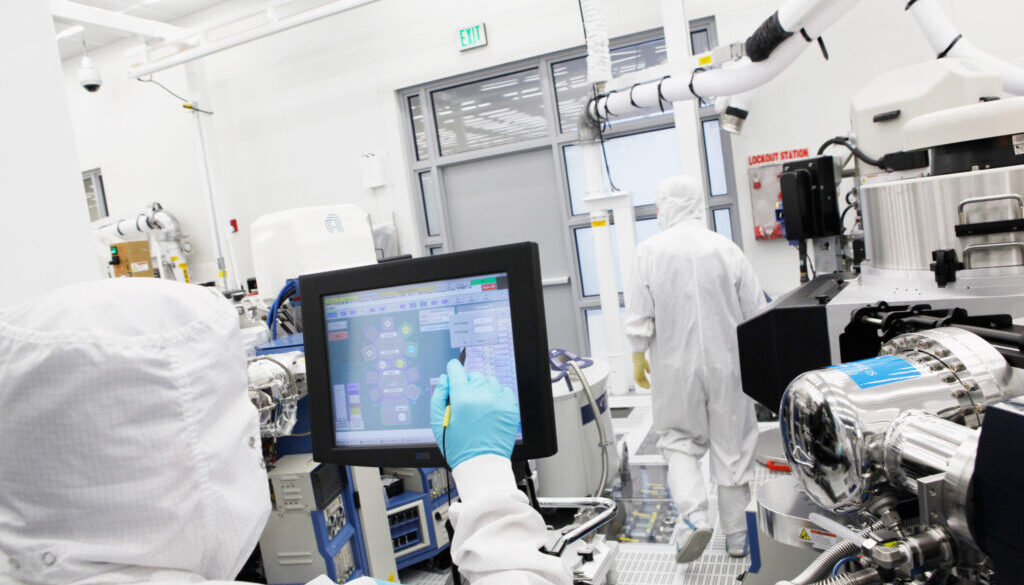The MedTech Sector in Costa Rica is vibrant
Table of Contents
Contact the Central American Group to establish nearshore manufacturing operations in the Green Park Free Zone.
With just over five million people, it seems unlikely that the MedTech sector in Costa Rica would be growing and thriving.
However, the country has many hallmarks of an innovation powerhouse, including a high budget for education spending, free trade zones that offer attractive tax incentives, and a proven track record of more than 360 multinational companies established in the country. These include 24 Fortune 100 companies.
The MedTech sector in Costa Rica benefits from the country’s value proposition
Carolina Sánchez leads the life sciences operations at CINDE, the Costa Rican Investment Promotion Agency, a private, apolitical, non-profit organization whose mission is to help international companies establish their operations in Costa Rica. Medical Devices represent 95 percent of the companies in the Life Sciences Sector with which CINDE works. These organizations represent a genuinely booming market.
“Our value proposition is based on three main pillars: people, the planet, and prosperity,” attests Sánchez.
“They tend to look for people in our talent pool.” “Since our army was abolished in 1948, all the resources previously allocated to this activity are allocated to education.” This is equivalent to more than 7 percent of the country’s GDP.
“We also have strong academic partnerships. When a new client or industry comes to Costa Rica and requires specific skills, we can work with them and academic institutions to develop a personalized approach that suits their needs.”
Social development goals are important to Costa Rica
Costa Rica is also a beacon for sustainability, adoption, and achievement of the Social Development Goals (SDGs) as the world turns to greener practices. For example, the country’s national electricity grid comprises 99% clean and renewable sources, mainly hydroelectric power, wind, and geothermal. Additionally, in 2016, immediately after COP21 Summit, Costa Rica became the first nation to sign a national pact to advance the SDGs. Also, the country has already launched a National Decarbonization Plan for 2050.
Costa Rica also boasts its ‘prosperity’ pillar, where companies from various industries find a well-preserved natural ecosystem and benefit from a technology-enabled environment. This has proven to be the ideal environment for cross-collaboration, where leaders in manufacturing, knowledge-intensive services, and the MedTech sector in Costa Rica come together to create patient-centric solutions. Although Costa Rica has historically been known for traditional exports such as coffee, pineapple, and bananas, since 2016, its number one export product has been medical devices. Last year, the export of these products amounted to $5.2 billion. This figure represents an increase of 24% over the previous year.
In addition, the country has successfully transitioned to exporting high-value-added services at a rate that is twice the average for OECD members.
This change began around the 1980s when Costa Rica prioritized high-value-added exports. Initially, the country experienced an influx of electronics companies investing there to manufacture components for the burgeoning mobile phone sector.
“But it really changed when Intel started operating here in 1997,” says Sánchez.
“That’s when the MedTech sector in Costa Rica started began developing this specialized talent pool to accommodate industry leaders like Hologic and Pfizer.”
By 2003, the MedTech sector in Costa Rica had 11 companies, with ‘megaprojects’ with more than 100 employees and more than $10 million in investment. Names like Abbott, Philips, and Cardinal Health were helping to establish Costa Rica as an up-and-coming healthcare technology cluster. Today, the country is home to 14 of the world’s top 100 medical technology companies, including Boston Scientific, Edwards Life Sciences, Smith & Nephew, and The Cooper Companies. These 14 leaders are among a total of 92 medical device companies already established in the country. Many of these names seek to capitalize on the country’s strategic location. Its time zone is ideal for doing business with US partners, as the flight time from Costa Rica to New York is comparable to traveling from coast to coast in the United States. In addition, the country serves as a sweet spot for global exports, given its 15 free trade agreements, giving access to two-thirds of the world’s GDP and putting countries like Canada, China, Singapore, and South Korea within easy reach.
Manufacturers operating in the MedTech sector in Costa Rica are developing even more complex devices, Sánchez says, with much of the value chain operating within its coasts.
Sometimes companies start small
“Sometimes they bring a pilot program here to test a particular process. And then suddenly, you have a whole chain of processes, from new product development to distribution. This is a model we are seeing now, especially in those companies that are in a mature phase and have been operating in the country for some time. You can find the right suppliers, service providers, and real estate solutions in Costa Rica. But, most importantly, you can find the talent and trust the country and academia to develop that talent. You can find everyone, from very specialized employees to assemblers and CNC machine operators. All manner of talent is here.”
The COVID-19 pandemic required a boom in healthcare innovation, helping to ease the strain on overworked and understaffed healthcare systems. Behind the scenes in Costa Rica, manufacturing continued apace. As a result, there was no business disruption for companies operating in the country, including manufacturing-related companies. These firms could quickly implement strategies to continue operating while administrative staff adopted work-from-home capabilities. As a result, Costa Rica’s exports were the least volatile in the Americas during this period and the third least volatile globally, according to UNCTAD’s 2021 Global Trade Update.
Companies such as Microvention and Boston Scientific moved a significant part of their production to the country during 2020 and 2021, mainly due to the availability of talent. That experience has helped consolidate the MedTech sector in Costa Rica as a stable alternative to disruptive markets such as Europe and Asia, says Cinde’s Sánchez.
“We saw many companies already operating here, changing production lines, because we never closed, not even for a single day. Businesses operated normally, even during the widespread shutdowns we saw worldwide. In fact, 2020 was a record year for the country regarding the number of FDI projects we managed to attract. That applies to both new projects and reinvestments. Then 2021 built on that success.”
In the coming years, Sánchez predicts that Costa Rica will incubate more and more new health-related companies in areas such as dentistry and cardiology. For example, eight of the world’s top 10 clear aligner manufacturers already operate in the MedTech sector in Costa Rica.
“I anticipate much growth in products that combine medical devices and pharmaceuticals. I also see growth in diagnostics, a booming market worldwide due to Covid and the need for diagnostic kits and rapid tests,” Sánchez asserts.
“Costa Rica is at the forefront of the MedTech industry, and we still have much room to grow here. We are looking forward to hosting more medical-related operations in the country.”
Source: Recluta.org
Contact Us
Please use this form to contact us and we will respond as soon as possible:





